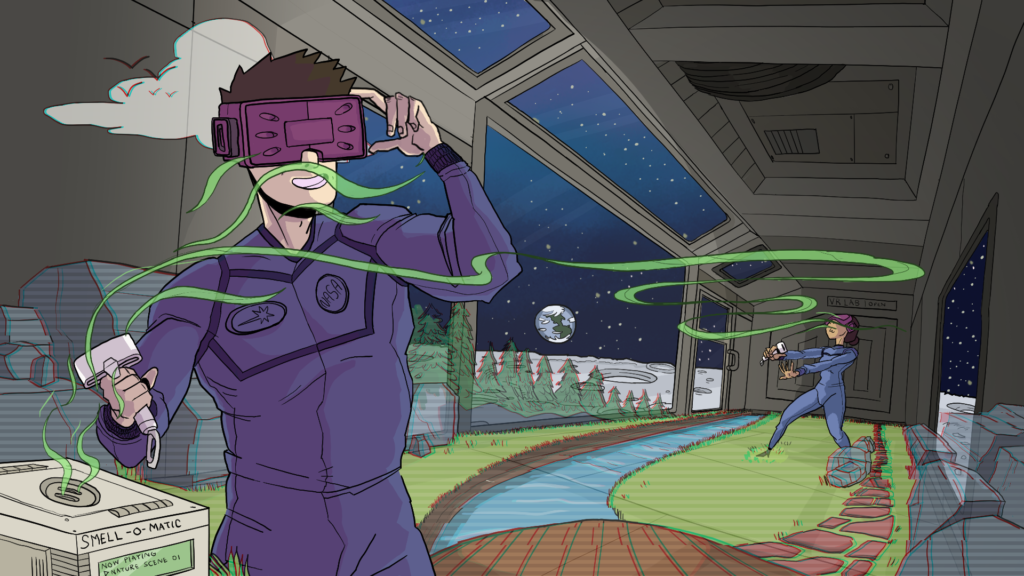Introducing … smell-evision? Adding scents to virtual reality could help astronauts cope with isolation during long missions

Astronauts are heading back to the moon, and this time they are focusing on establishing the first long-term presence. Afterward, NASA has its sights set on a trip to Mars.
With these long-duration missions ahead, new challenges will have to be accounted for on every front. The moon is about 238,855 miles from Earth, but a trip to Mars for an astronaut means traveling around 140 million miles away and leaving our planet for about three years. Because of this distance, astronauts will also face up to a 20-minute communication delay from Earth to Mars.
While these missions and the potential for discovery are exciting, astronauts will need extra support in managing the behavioral effects of isolation, confinement and distance from home.
“For future long-term missions, we won’t have real-time communication or the ability to send care packages like we do now, so NASA is looking for other methods to help maintain behavioral health and performance,” said Renee Abbott, a doctoral student in the Department of Aerospace Engineering at Texas A&M University.
Abbott is working with her faculty advisor, Ana Diaz Artiles, an assistant professor in the department, to address this concern by using virtual reality (VR). Specifically, they are studying the effects of incorporating scents into a VR environment.
“During long-duration spaceflight missions, astronauts experience significant sensory deprivation. This can have detrimental consequences on multiple levels, from physiological responses to stress and isolation to decrements in behavioral health and wellness,” said Diaz Artiles. “We are creating ‘augmented’ or ‘enriched’ multisensory experiences that could lead to healthier individuals with improved behavioral health and performance.”
When we take in a smell, the information from those odors routes from our olfactory system to our limbic system, which is a part of the brain associated with emotional and memory processes. This is why a scented candle can remind you of homemade cookies at grandma’s house, or perfume can evoke certain emotions.
Abbott and Diaz Artiles are zoning in on these effects that scents can have on the psychological state by building scents into a VR nature environment. Adding scents to a VR experience has been done before, but Abbott and Diaz Artiles’ use of localized scents separates their work from previous research.
A user could walk near a river in the VR environment and not only hear the sound of rushing water but also smell wet grass. Or if they wandered into a forested area, they would smell the fresh scent of pine. This is accomplished by using hitboxes, which are invisible shapes in the VR environment that activate when the avatar collides with them. “We’re hoping that using VR to deliver nature to astronauts will be beneficial,” said Abbott. “On Earth, nature has beneficial impacts for us psychologically and physiologically, so we’re trying to create the closest simulation to real nature that we can by adding olfactory stimuli.”

